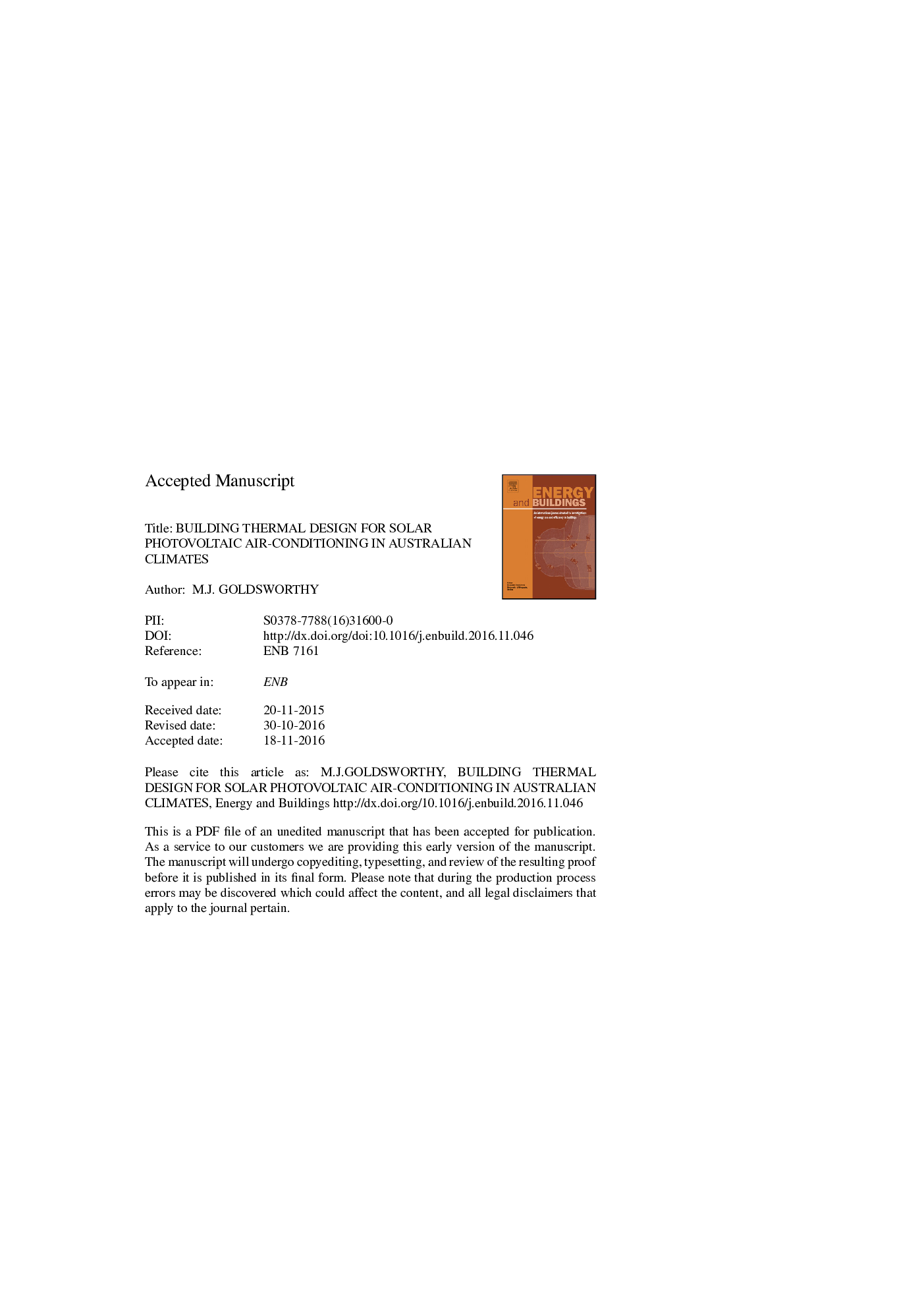| Article ID | Journal | Published Year | Pages | File Type |
|---|---|---|---|---|
| 4919390 | Energy and Buildings | 2017 | 35 Pages |
Abstract
Residential buildings should be places in which their occupants feel comfortable and content. In an energy conscious world the challenge of offering improved indoor comfort is contrast with the desire to minimise grid energy consumption (both from an efficient distribution perspective and to minimise fossil fuel consumption) as well as the associated cost. Occupant behaviour is one of the key drivers of energy consumption, and in particular peak energy consumption, which is largely the result of air-conditioner usage. Selecting the most cost effective building designs or modifications that met these dual goals regardless of occupant behaviour is a non-trivial task. One way of approaching this problem that guarantees no grid connected energy usage is to use an off-grid PV-battery driven air-conditioner. Here we use a detailed simulation model to investigate the suitability of a small off-grid PV-battery system to power an air-conditioner to provide occupant comfort for a range of different building thermal designs across Australian climates. The relative importance of different building parameters on the ability of the off-grid system to provide comfort is discussed. Results show that even in tropical climates, there are certain building thermal designs that lead to indoor temperatures <25 °C at all times with a modest size PV-battery system.
Keywords
Related Topics
Physical Sciences and Engineering
Energy
Renewable Energy, Sustainability and the Environment
Authors
M.J. Goldsworthy,
